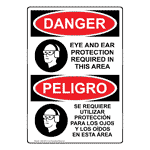
NIOSH Study Identifies Top Industries for Hearing Problems

A new study from NIOSH identifies industries where hearing difficulty and tinnitus are most prevalent, based on data from the 2007 National Health Interview Survey. NIOSH says Hearing Difficulty and Tinnitus among U.S. Workers and Non-workers in 2007 is the first study to report tinnitus prevalence by U.S. industry sector and occupation, and also to provide tinnitus and hearing impairment estimates side by side.
Workers in agriculture, forestry and fishing and hunting had significantly higher risk of hearing difficulty, tinnitus (“ringing in the ears”) and combined conditions. Manufacturing workers had significantly higher risk for tinnitus and combined tinnitus and hearing difficulty.
Hazardous noise in the workplace affects some 22 million U.S. workers. Workers with hearing loss often have trouble localizing sounds or hearing warning signals and have an increased risk of accidents. Tinnitus can disrupt sleep and concentration, increasing fatigue, impacting alertness, degrading performance and potentially increasing risks for accidents on and off the job. Many cases of hearing loss are attributable to occupational noise exposures.
Among U.S. workers who had been exposed to occupational noise, 23 percent had difficulty hearing, 15 percent had tinnitus and nine percent had both conditions. Among non-exposed workers, the prevalence was 7 percent, 5 percent and 2 percent, respectively.
Other Study Findings:
- Workers in life, physical and social science occupations, and personal care and service occupations had significantly higher risks for hearing difficulty.
- Workers in architecture and engineering occupations also had significantly higher risks for tinnitus.
- Workers in sales and related occupations had significantly lower risks for hearing difficulty, tinnitus and their co-occurrence.
The study identifies industries and occupations in which prevention efforts need to be focused.
“Hearing loss can greatly impact a workers’ overall health and well-being,” said NIOSH Director Dr. John Howard. “A study of the prevalence of hearing conditions among the overall U.S. adult population and among noise-exposed and non-noise-exposed workers gives a clearer understanding of where improved strategies for prevention of hearing loss are needed. Hazardous levels of occupational noise exposure and environmental noise exposure both need to be avoided.”
Hearing Safety Signs:
 |  |  |  |

